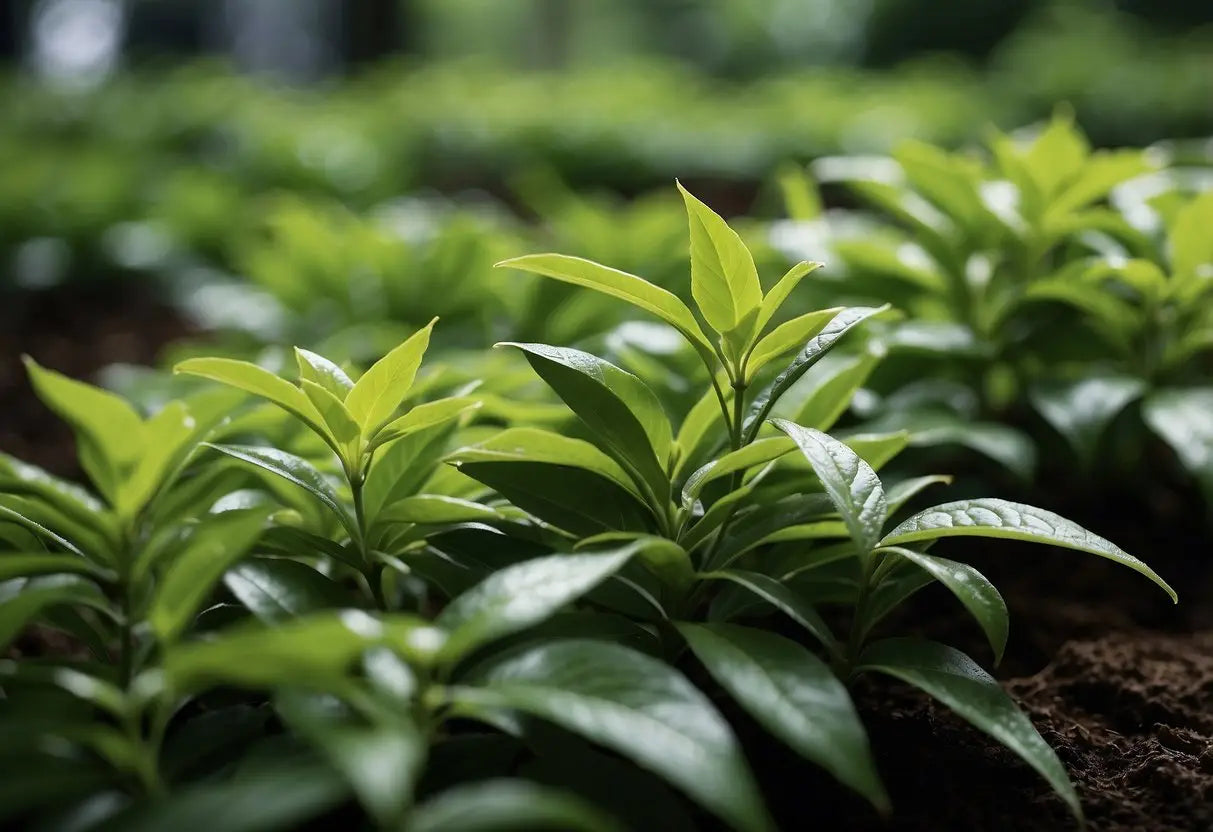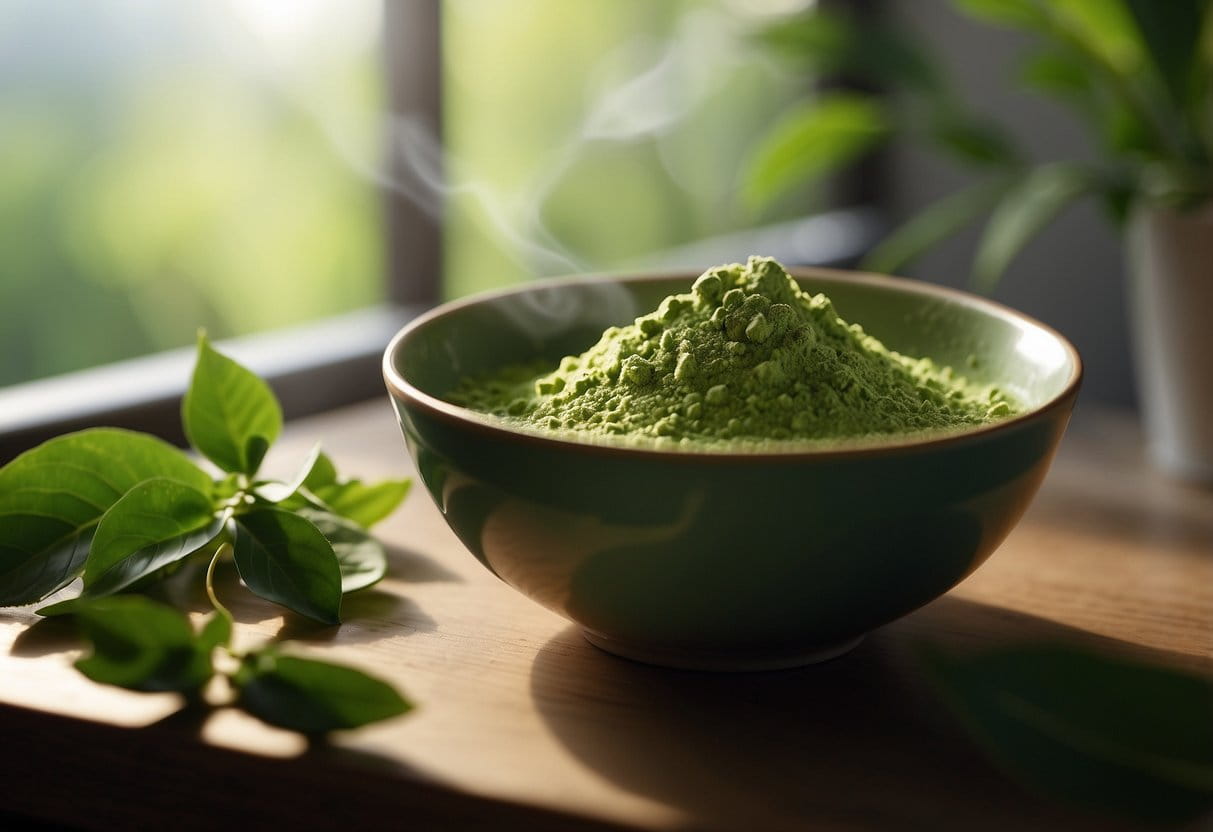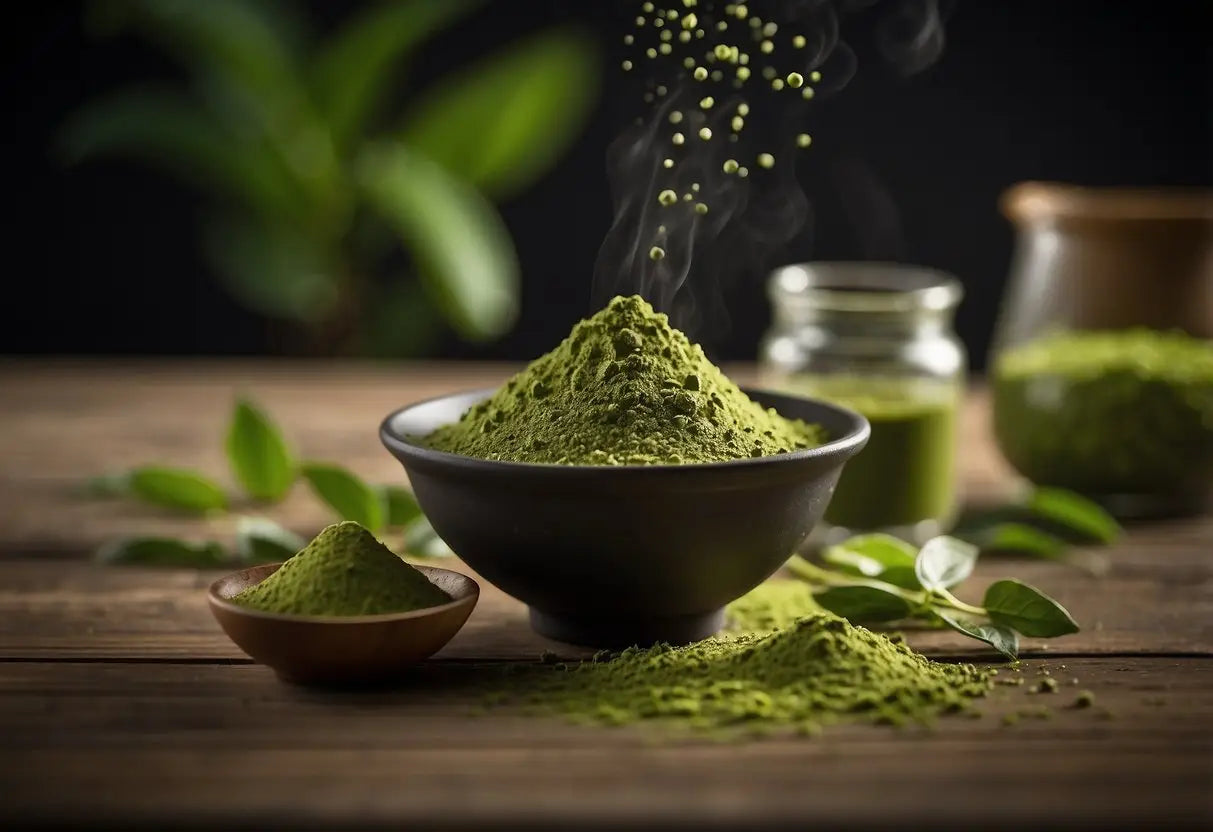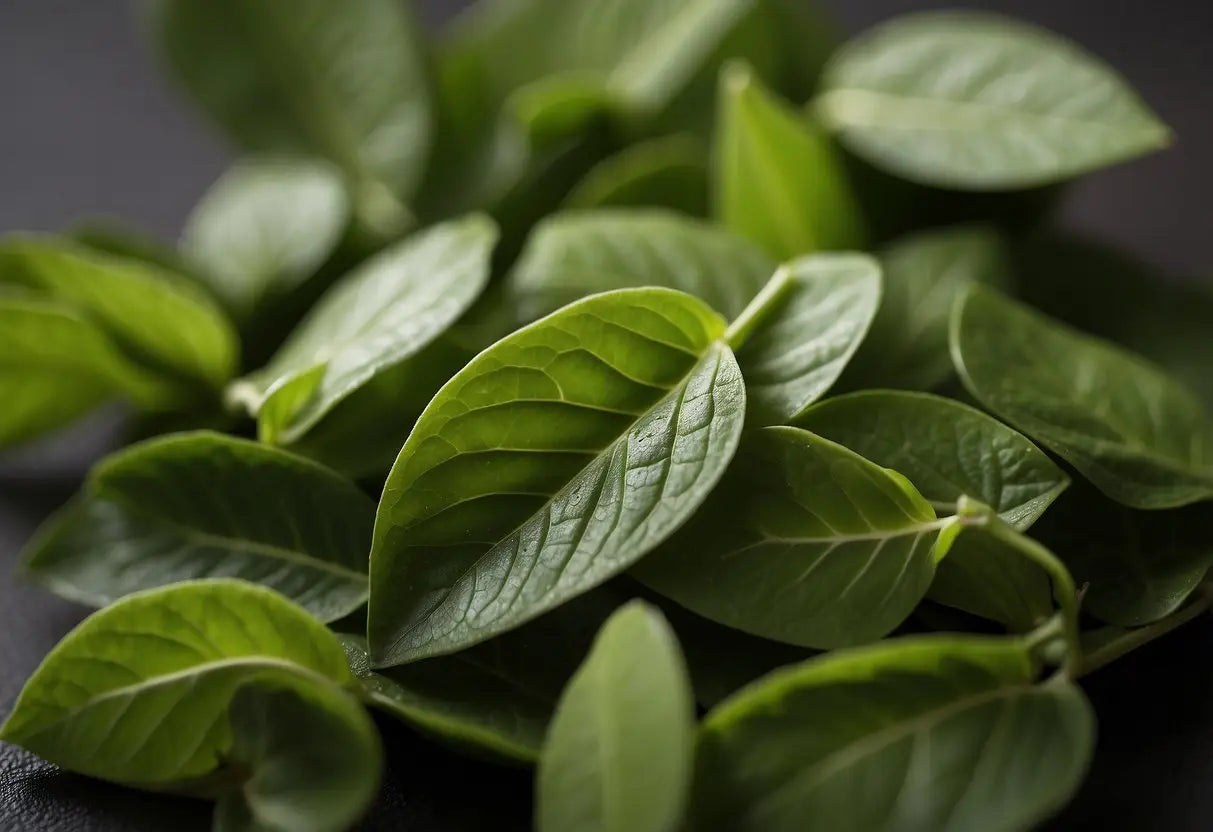Matcha Leaves
Matcha leaves are finely ground powder made from specially grown and processed green tea leaves. These leaves are typically cultivated in Japan, though they can also be produced in other regions with suitable climate and soil conditions.
Key Characteristics of Matcha Leaves:
- Shade-Grown: Matcha leaves are grown in the shade for about three weeks before harvesting. This process increases chlorophyll levels, giving the leaves a vibrant green color.
- Harvest Time: Only the youngest, most tender leaves are picked, ensuring a smooth, non-bitter flavor.
- Stone-Ground: After harvesting, the leaves are steamed, dried, and finally ground into a fine powder using traditional stone mills.
Nutritional Benefits:
Bestsellers
Matcha leaves are known for their high antioxidant content, particularly catechins like EGCG. They are also a source of vitamins A, C, and E, as well as minerals such as potassium and iron.
Culinary Uses:
- Tea Preparation: Matcha is traditionally whisked with hot water to make tea.
- Cooking and Baking: It's also used as an ingredient in recipes, adding flavor and color to dishes like cakes, cookies, and smoothies.
Grades of Matcha:
Matcha comes in different grades, such as:
| Grade | Use Case |
|---|---|
| Ceremonial | Best for traditional tea ceremonies |
| Premium | Suitable for everyday drinking |
| Culinary | Ideal for cooking and baking |
Purchase and Storage Tips:
When buying matcha, look for bright green, fine powder. Store it in an airtight container, keep it in a cool, dark place to preserve its freshness and flavor.
History and Origin

Matcha's journey begins in ancient China but finds its true home and cultural prominence in Japan. Through centuries, it has evolved from ceremonial uses to a global health trend.
Traditional Uses
Matcha originated during the Tang Dynasty in China (618-907 AD), where it was first consumed as a powdered tea. It was introduced to Japan around the 12th century by the monk Eisai, who brought back the seeds and the tea-drinking method. In Japan, matcha was initially used primarily by the Samurai and monks. It became an integral part of the Japanese tea ceremony during the 15th century, symbolizing peace and mindfulness.
Cultural Significance
Over centuries, matcha has woven itself into the fabric of Japanese culture. The Japanese tea ceremony, or "chanoyu", is where matcha holds significant importance, reflecting Zen Buddhist principles of simplicity and mindfulness. Matcha's deep green color and rich flavor are appreciated not just in tea ceremonies but also in culinary uses such as sweets, noodles, and even modern lattes. Celebrated during traditional festivals and rituals, matcha symbolizes harmony, respect, purity, and tranquility.
Cultivation and Harvesting
Matcha leaves are cultivated using specific techniques to ensure a high-quality product. The processing methods are just as critical to preserve the unique properties of matcha.
Farming Techniques
Shade-growing is essential. Matcha plants are shaded for three to four weeks before harvesting. This increases chlorophyll levels and enhances amino acids, particularly L-theanine, contributing to matcha's unique flavor.
Lao Ban Zhang
Fertilization occurs regularly, using organic matter like compost. This ensures that the soil remains nutrient-rich.
Harvesting:
- Leaves are picked by hand.
- Only the youngest, greenest leaves are selected.
- Harvesting happens once a year, typically in May.
These practices ensure that the leaves are tender and full of flavor.
Processing Methods
The first step is steaming the leaves quickly after harvest to prevent oxidation. This maintains the vibrant green color and nutritional profile.
Next, they are air-dried and the stems and veins are removed. The result is known as tencha.
Tencha leaves are then ground into a fine powder using traditional stone mills. This process can take an hour to produce just 30 grams of matcha.
Proper storage in airtight containers is crucial to protect the matcha from moisture and light, maintaining its freshness and quality.
Health Benefits

Matcha leaves offer a range of health benefits, particularly due to their high antioxidant content and ability to enhance energy and alertness.
Antioxidant Properties
Matcha is rich in catechins, a type of antioxidant prevalent in green tea. Among these catechins, Epigallocatechin gallate (EGCG) is particularly notable. EGCG helps to combat free radicals in your body, reducing oxidative stress and potentially lowering the risk of chronic diseases such as heart disease and cancer.
Compared to other green teas, matcha has higher levels of antioxidants due to its unique cultivation and preparation process. The technique of shading the leaves increases the chlorophyll and amino acid content, enhancing overall antioxidant levels. Consuming matcha regularly can support better skin health and improved immune system function.
Energy and Alertness
Matcha contains a unique combination of nutrients that work together to boost your energy levels and improve mental clarity. The caffeine found in matcha is balanced by L-theanine, an amino acid that promotes relaxation without inducing drowsiness. This results in a more stable energy boost compared to coffee, which often leads to jitters and crashes.
L-theanine also enhances your focus and concentration by increasing the production of alpha waves in your brain. This state of relaxed alertness can be particularly advantageous during study sessions or work periods requiring intense attention. Furthermore, it may support better cognitive function and quicker reaction times, ensuring you stay sharp throughout the day.
Culinary Uses

Matcha leaves are notably versatile in the culinary world. They can be enjoyed as a traditional beverage or incorporated into various recipes for cooking and baking.
Tea Preparation
For a traditional tea experience, matcha leaves are finely ground into a bright green powder. You will need a bamboo whisk and a bowl for the preparation.
Start by sifting 1-2 teaspoons of matcha powder into the bowl to prevent clumping. Add a small amount of hot water (about 2 ounces at 175°F) and whisk in a "W" motion until frothy.
Serve immediately in a small cup. For a more concentrated beverage, increase the amount of matcha powder. You can also add milk to create matcha lattes.
Cooking and Baking
Matcha leaves add a unique flavor and vibrant color to recipes. Use them to make desserts such as matcha cookies, cakes, and ice cream.
Sift matcha powder with dry ingredients to ensure even distribution. Common ratios are 1-2 tablespoons of matcha powder per cup of flour.
Beyond sweets, matcha can be used in savory dishes. Add matcha to sauces, dressings, or even pasta dough for a delightful twist. Ensure to adjust the quantity to balance the bitterness of matcha with other flavors in your dish.
Matcha Quality and Grades

Matcha is often categorized by its quality and grades, which directly influence its taste, color, and use.
Ceremonial Grade
- Best for: Drinking straight
- Color: Vivid green
- Taste: Smooth, slightly sweet, less astringent
- Use: Tea ceremonies, high-quality beverages
Premium Grade
- Best for: Daily drinking
- Color: Bright green
- Taste: Balanced flavor, slightly sweet
- Use: Lattes, smoothies, mixed beverages
Culinary Grade
- Best for: Cooking and baking
- Color: Green, slightly duller
- Taste: More robust, slightly bitter
- Use: Desserts, sauces, baked goods
When selecting matcha, consider these grades to find the right match for your needs.
Higher-quality matcha will typically be brighter in color and smoother in taste.
Lower grades, while still flavorful, may have more bitterness and a less vibrant hue.
Global Market Trends
In recent years, the demand for matcha has seen a significant rise across the globe. This increase is driven by growing consumer interest in natural and health-promoting products.
Major Markets
The United States, Europe, and Asia are the primary markets. In the US, matcha's popularity is soaring thanks to its inclusion in beverages, desserts, and health foods.
Key Growth Factors
- Health Benefits: Matcha is rich in antioxidants and has been linked to several health benefits.
- Versatility: Its use in various culinary applications boosts its market appeal.
- Consumer Awareness: Increasing knowledge about health and wellness drives the demand.
Market Segments
The market can be categorized into:
- Powdered Matcha
- Matcha Beverages
- Food Additives
Consumption Patterns
Consumers are increasingly seeking high-quality, ceremonial-grade matcha for both traditional tea preparation and modern culinary applications.
Leading Brands
Some of the notable players in the market include:
- Aiya
- Ippodo
- MatchaSource
Future Trends
You're likely to see:
- More organic matcha products.
- Increased innovation in product formulations.
- Expansion in e-commerce channels.
Table: Key Market Statistics
| Region | Growth Rate (%) | Market Size (2023) |
|---|---|---|
| North America | 12.5 | $120 million |
| Europe | 10.3 | $85 million |
| Asia-Pacific | 15.2 | $210 million |
The data above highlights robust growth in the Asia-Pacific region, indicating a significant market opportunity.
← Older post Newer post →











